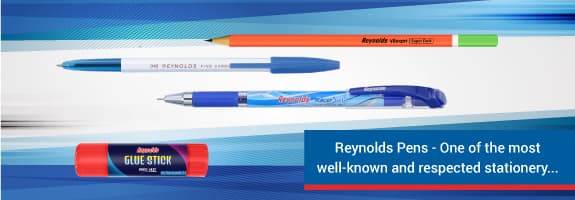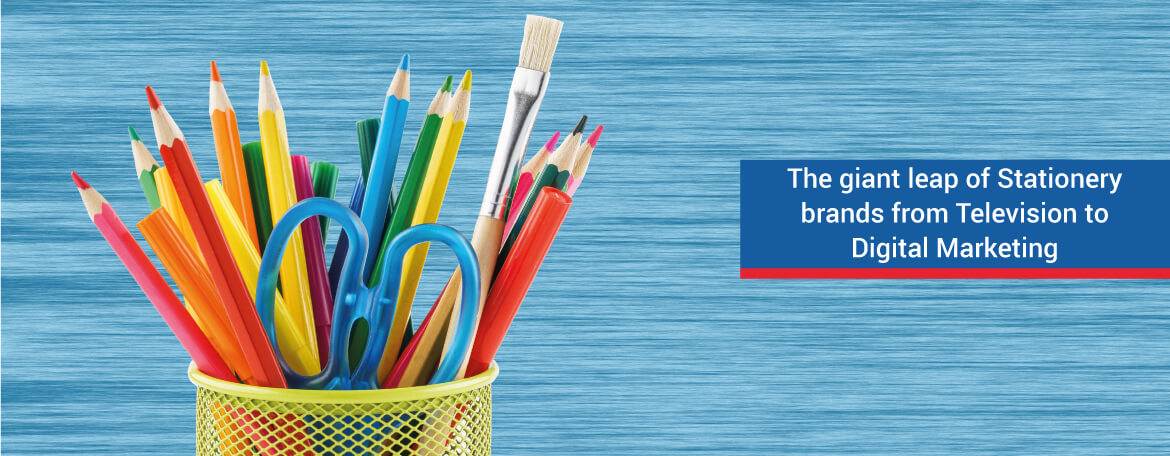
The giant leap of stationery brands from television to digital marketing
As brand awareness is ample and the consumers are online, digital marketing surely makes more sense for the category, opines industry
Who doesn’t remember the hilarious Camlin permanent marker ads that brought a dead man alive, or the royal win of Nataraj in a race of pencils, or Shah Rukh Khan taking a ‘waterproof test’ to be identified from his clone, or he turning everything from a school student to a corporate employee for Linc Pens! These are only a few of the many iconic ads that led to the setting up of bases for several big stationery brands in India. They used television as a big medium to reach out to their prospective consumers and spent good bucks on ATL marketing. Several, especially the ones in the writing instruments category, also roped in celebrity endorsers to raise their share of awareness. However, as the digital revolution picked up and consumer trends shifted, there was a gradual decline in brands’ affinity to big ambassadors, and eventually in television as an advertising medium. And then the pandemic, finally, truly made the industry a digital-first marketing entity. exchange4media traces the big shift of stationery brands in India from television to digital.
From Liberalisation to Digitalisation
As per a TAM AdEx data released in 2011, writing instruments were the fifth largest category of advertising on television, taking up 3% of overall ad volumes in 2001. The brands were actively visible on the screens and were trying to build a market for themselves. Soon after, from 2007-08 onwards, brands like Reynolds and Cello started introducing big brand ambassadors to further their share of awareness.
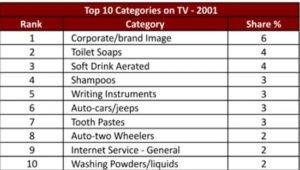
Adds Wunderman Thompson Kolkata SVP & Managing Partner Vijay Jacob, “In yesteryears, the stationery category was highly commoditized with local players offering low-cost but inferior offerings. At that point, getting people to know about and upgrade to brands in a mass popular category like stationery necessitated endorsement by popular celebrities and actors who had mass appeal. It helped people get interested in brands and prompted them to try those even if it required paying a slight premium.”
However, with digitalisation, the trend started to subside. While big brand ambassadors started leaving the scene around 2011, the next few years saw the brands adopting digital slowly, which really became prominent in the pandemic era. As per TAM AdEx data, the ad volume for the stationery category in TV saw a drop of 23% in Jan-Jun 2021 compared to the same quarter in 2019.
During the same period, ad insertions by the stationery category in digital medium saw a sharp rise of 19 times.During the same period, ad insertions by the stationery category in digital medium saw a sharp rise of 19 times.
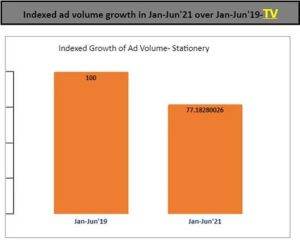
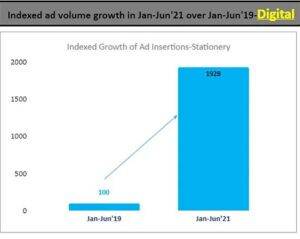
Grapes Digital founder & CEO Himanshu Arya further notes, “A traditional medium like TV is an expensive way to market your product. Brands know that students are spending most of their time on digital channels. Hence, spending their market budget on digital media gives them the edge.”
From Building Brands to Building Salience
Another thing that has shifted in stationery brands’ marketing strategy is their focus from building brand awareness to building brand salience. And nothing could be better than digital marketing for that.
As Linc Pen and Plastics Ltd Managing Director Deepak Jalan shares, “Pen is a low-involvement category. Mostly students have been our prime TG and they show brand loyalty around exams. So between 2008 and 11, when we were working with big brand ambassadors like Shah Rukh Khan and Katrina Kaif, our focus was on building brand awareness and creating a loyal prodigy of customers. And while it did not have much of an impact on our sales then, it surely did increase brand awareness. Today, brand awareness is not an issue for us. We just want to be available and visible to our customers at all possible touch-points.”
He adds that apart from the usual presence at retail outlets, they are aggressively working on a solid digital strategy and have started increasing their presence on e-commerce channels too.
Reynolds General Manager – India & South Asia Rajat Vohra, in the same vein, highlights, “I would say that our share of awareness had gone up by 20 points after the continuous running of ads featuring Sachin Tendulkar for three months back then. But, interestingly, it did not go down even after we stopped running those big celeb ads. It remained constant. Right now, it makes more sense to be present on digital as our core TG of students is there. Additionally, from hereon, our focus is more on building saliency and awareness for different products that we have. While we are well known for writing instruments, there are many other products in the art space, for example, that we want to promote and influencer engagement is really helping us push that agenda.”
Now the brands are relying on traditional advertising on television only for new product launches or festive occasions, as Bali shares, “Traditional advertising channels aren’t being used much anymore unless it is related to gifting/ festive occasions. Digital is being leveraged to promote the customisation of the instruments themselves. Also, a lot of luxury/premium brands are using digital mediums to capture newer audience bases. This has also led to a sense of polarisation within consumers where stationery has now become a passion to pursue.”
Jacob adds, “Brands are generally giving the primary launch communication or product information on traditional media while sharing the social media page links for continued brand engagement. Traditional media is helping inform and build recall while modern channels are helping in building brand familiarity and connection.”
The Rise of E-commerce
Another factor that is contributing to this shifting of marketing rupees to digital mediums is the rise of e-commerce platforms.
Chincholi agrees, “Consumers have evolved; owning stationery has become an extension of one’s personality – from brand choice to functional relevance. To fuel these choices, e-commerce platforms have helped in the discovery of newer brands & ensured availability in the shortest time from order to delivery. The legacy brands continue to use social platforms with a lot of meaningful content and also use online videos very effectively. Given that 26.31% of India’s population is in the age group of 0-14 years currently, India has approximately 250 mn school-going kids (source: ibef.org) which shows a mammoth potential from the student base alone.”
BIC Cello India Marketing Director Tanveer Khan highlighted, “The pandemic has significantly changed the consumer behaviour across the world. Certain industries have witnessed a change more than others – education and e-commerce fall into that category. We have been working towards building a robust e-commerce portfolio by introducing new products across segments. Building a strong omnichannel presence as part of BIC Cello’s plan even before the pandemic. We always had a plan of making our products available in alternate channels of modern trade, e-commerce, institutions and exports. 2020 only accelerated our journey in alternate channels particularly e-commerce and digital. BIC Cello grew more than 50% in terms of a sell-out on e-commerce platforms and we have a double-digit business contribution from the alternate channels. 2020 brought new trends and accelerated others. The most notable ones include the adoption of digital and e-commerce channels and the personalization of communication to occasions.”
The category, therefore, is poised for stronger growth on digital platforms in the coming days. Right from adopting new technologies in products to expanding their presence on social media, several things are going to write the next chapter in its history. It will surely be interesting to see how it pans from here!

